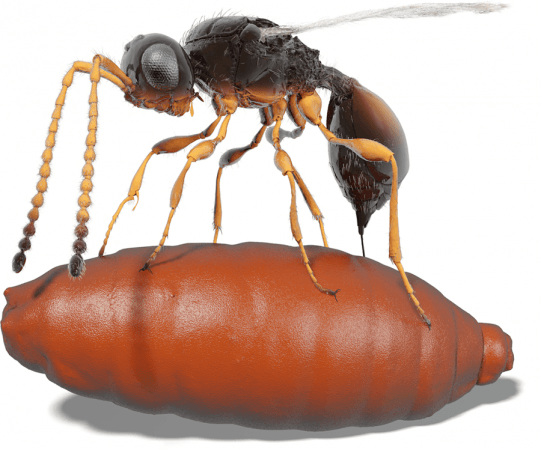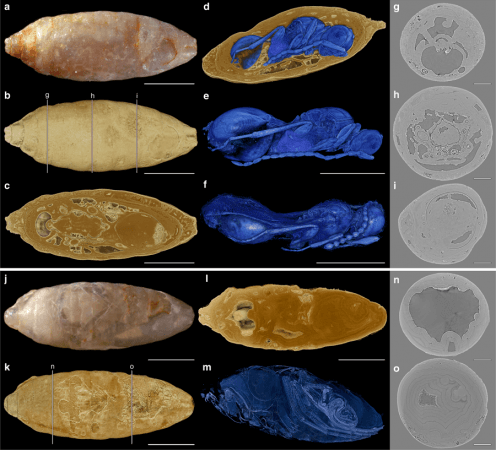
Wasps live their lives in ways that are downright horrifying. Unlike most other predatory insects, they do not hunt, kill, and feast. Instead, they like to keep their prey alive as long as possible, slowly eating and dismembering their prey as to keep them alive for as long as possible.
They are also highly parasitic, often laying eggs inside live pupae so young wasps can eat their way out of an insect as soon as they are born.
Now, scientists have, for the first time ever, have found evidence of this behaviour from millions of years ago, offering a view into the grizzly practice and how it has evolved over time.
According to a report on the study by the New York Times, researchers from Germany using synchrotron X-ray imaging, found parasitic wasps inside over 50 fossilised developing flies dated to about 30 million to 40 million.
"They are insects that eat other insects alive," said Lars Krogmann, an entomologist at the State Museum of Natural History Stuttgart in Germany.
"They don't just kill them, they want to keep them alive for as long as possible."
Known as parasitoid wasps, they are smaller than the dreaded yellow jackets. They have needlepoint ovipositors, notes the report, which they use to inject their eggs in or on top of other insects. As the baby wasps begin to grow, they chew through their hosts, eventually killing it. At times, they burst through from within the host's body like a xenomorph.
Shockingly, the report mentions that nearly every insect species out there has at least one type of parasitoid wasp that specifically specializes in laying eggs in and killing it. This includes cockroaches and spiders, notes the report.
"It's the first time we definitely have proof of a developing parasitoid wasp inside its host in the fossil record," said Thomas van de Kamp, an entomologist of the Karlsruhe Institute of Technology and lead author.

The fossils of fly pupae, notes the report measure only 3 or 4 mm long and look like stony grains of rice. They were unearthed in the 1890s and early 1900s in France. Researchers spent about taking images of over 1,500 fossilised fly pupae and found about 55 with parasitoid wasps in them.
Dr. van de Kamp drew a picture of what went down about 30 million years ago, notes the report. When an animal dies, its carcass attracts flies which lays its eggs inside rotting flesh. These eggs eventually hatch and become larvae that ate the rotting flesh and over time, these maggots enter their pupal phase after which they will emerge as flies.
Now it is time for the wasps. Parasitoid wasps came along and laid their own eggs inside the resting pupae, which disrupted the insect's development. Wasp larvae then begin to eat the larvae from inside the protection of the pupa. They eat and grow into adult wasps. For reasons unknown, this entire setup died suddenly wasp inside pupa and got fossilised for posterity, notes the report.
Through this study, the team have identified four never seen before parasitoid wasps note the report. Two of them have been named Xenomorphia resurrecta and Xenomorphia handschini, they after the Xenomorphs from the Aliens movies.

















